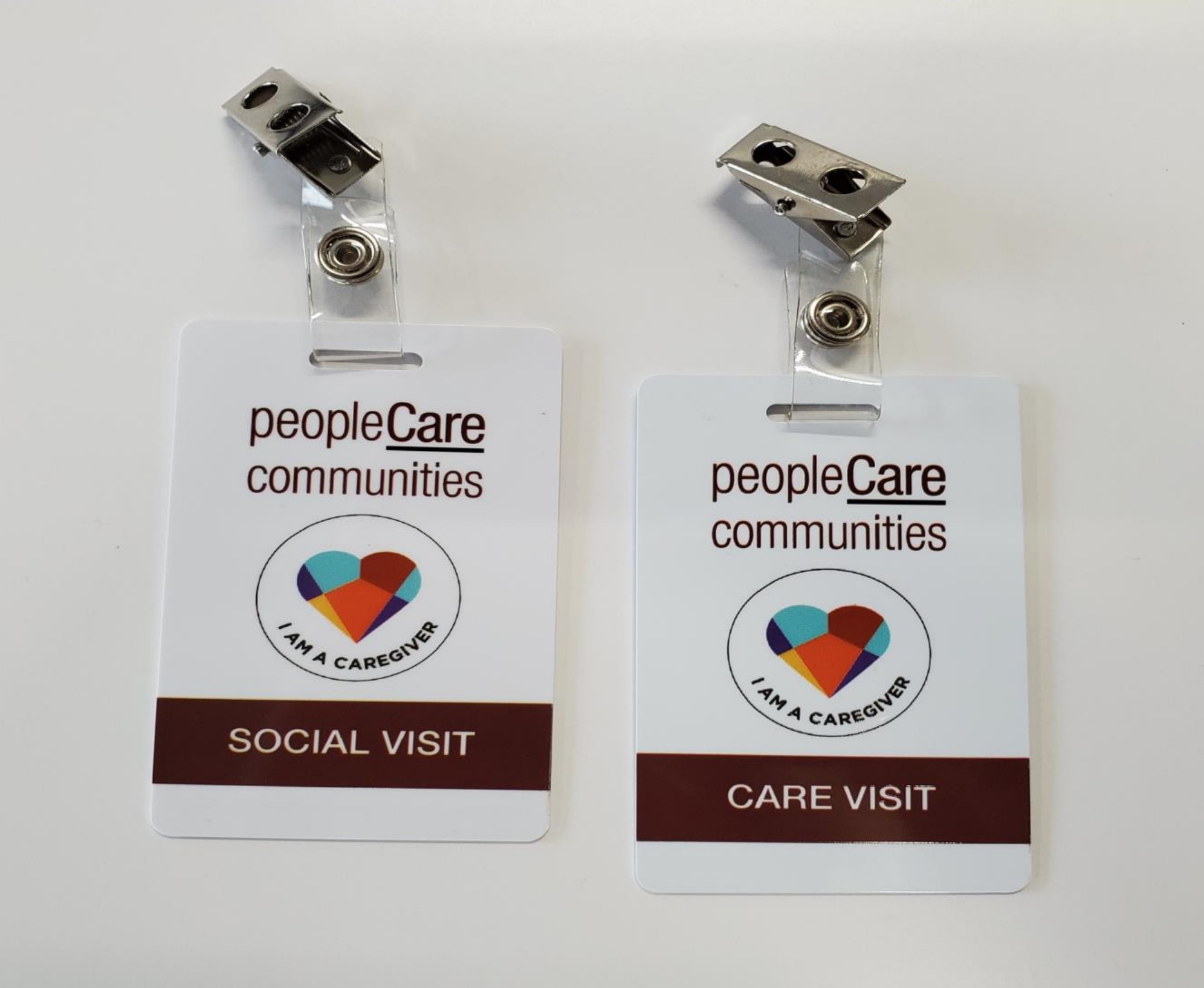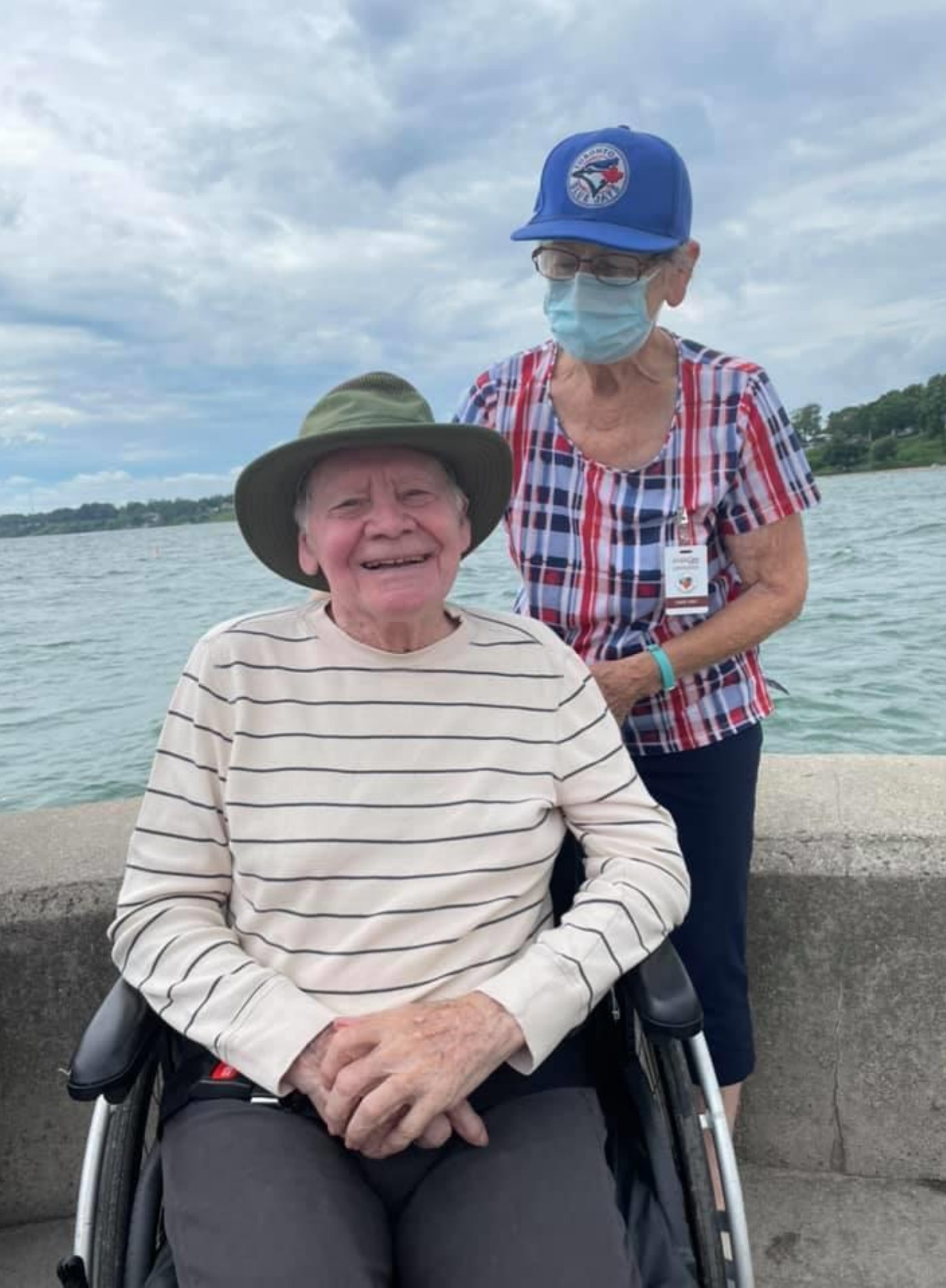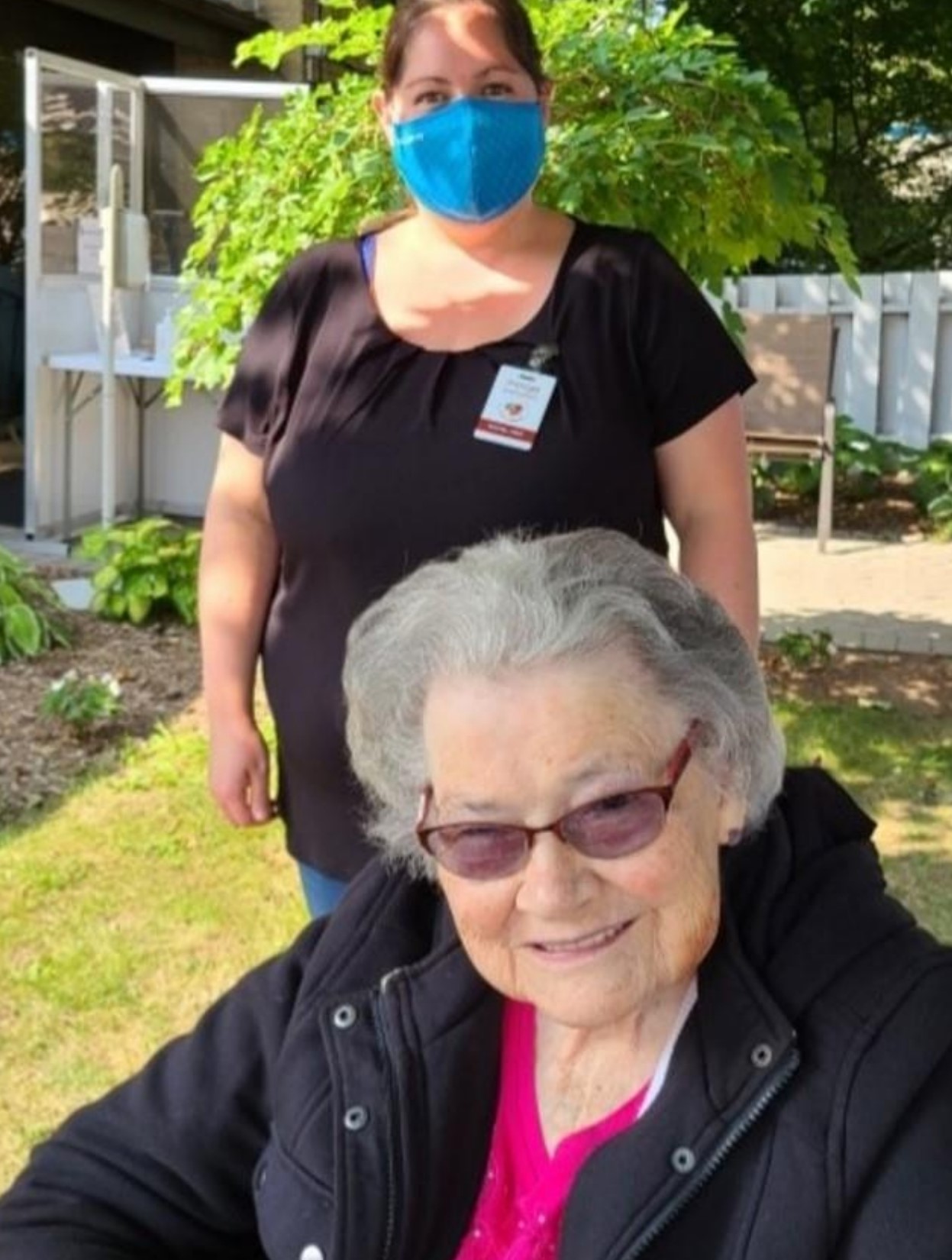Integrating Families as Essential Care Partners
Growing a Family Caregiver Program – Nurture a culture shift and be amazed by what blooms
No matter where you live, it’s the presence of family that makes a home feel most like home. That’s why, in a year with many barriers to time spent with loved ones, peopleCare worked so hard to support an uninterrupted presence for designated family caregivers in our long-term care and retirement homes.
Families are an extra set of loving hands, eyes and ears – true caregiving partners with our teams. At the outset of the pandemic, when unprecedented visitor restrictions helped protect everyone, peopleCare committed to honouring the meaningful role that families play in quality of life and wellbeing, especially when they couldn’t be hands-on.
Starting with digital engagement, our teams swiftly leveraged apps to support thousands of online visits. Next was creating safe, accessible and meaningful outdoor visits. And we were determined to do even more.
Family Caregiver Toolkit
Along with keeping families informed and engaged, when government long-term care directives changed and residents were able to designate “essential” caregivers, peopleCare was ready: with communication, training, PPE, and unique resources like a Caregiver Pledge and “I am a Caregiver” ID badges.

peopleCare’s “I am a Caregiver” ID badges
This was thanks in part to strong relationships with groups like the Ontario Caregiver Organization, which partnered with peopleCare as an early adopter of their practical resources aimed at supporting family caregivers in health care settings.
Shifting culture
As a third-generation family owned and operated organization, peopleCare has an ingrained appreciation for our families and their many contributions in our homes. At the same time, the pandemic challenged our teams to think differently.
“Creating the Toolkit was the easy part,” says Jenn Killing, peopleCare’s Vice President, Quality, Research and Strategic Partnerships. “Changing the conversation to focus on why we absolutely should support family presence during outbreaks, and working together to change our practices to make it possible, that took a little more time and focus.”
Establishing a shared understanding and agreement around what defines essential care – and that it includes psychosocial and spiritual connection as much as physical care – was a natural progression in how we integrate our families as care partners.

peopleCare resident & designated family caregiver enjoy a beach day together
Wendy Filiatrault, Director of Care at peopleCare AR Goudie, says the program reinforces that all families are caregivers in one way or another, and the role of staff and family caregivers is complementary when supporting resident experience and quality of life.
“The majority of our caregivers are here to provide meaningful connection to their loved one,” says Filiatrault. “That social aspect, engagement, and support of their needs, wants and wishes, is just a different part of care – as essential to our residents’ well-being as physical care.”
Improvement opportunities
peopleCare now has over 1,150 designated family caregivers. In any given week, we are supporting hundreds of these care partners in safely spending precious time with their loved ones in our homes.
With a research funding grant from Healthcare Excellence Canada, peopleCare is working with the Ontario CLRI to evaluate the program. Through interviews, surveys and panel discussions, the study will identify what is working well and where enhancements could better support residents and families.
According to Lead Researcher James Conklin, the pandemic brought up questions like: What kind of care should families provide? Should we formalize family caregiver programs? And how do we acknowledge and recognize family caregivers?
“When you step back from the data we’ve gathered, it’s apparent the program is universally seen as valuable,” says Conklin. “The opportunity now is to keep thinking about how best to continue integrating families into the community of the home.”

peopleCare resident & designated family caregiver
What’s next?
The pandemic has shown that despite any misgivings or challenges, it is possible to successfully and safely engage families to support resident care and well-being in all situations.
Along with the opportunity to continue building meaning and value into our overall program and resources, peopleCare now has a pool of informed and engaged family caregivers that could be tapped, for example, to strengthen and bolster our Family Councils.
In the meantime, to appreciate the program’s positive impact, one need look no further than the many family caregivers who spent time in our homes before, during and after active COVID-19 outbreaks. Their experiences of love, laughter and special memories tell the story.
“I am thankful to peopleCare for embracing family presence during outbreaks. They provided training and personal protective equipment to keep us safe,” says family caregiver Debbie Smith. “I was able to keep [my mom] busy, entertained and connected with the family during the holidays. I treasure the time we shared while mom was in isolation.”
Three tips for success
Thinking about implementing a Family Caregiver program in your long-term care home?
- Engage staff early and often. Supporting family caregivers in long-term care requires a culture shift. Staff who acknowledge the importance of family caregivers in care and quality of life may also feel unsure of the benefits of formalizing the role, and apprehensive about certain care roles and tasks. It’s essential that staff buy into the program and the many advantages that come from having families as care partners.
- Be flexible and resident-focused. A key finding of peopleCare’s evaluation is that the role families want to play depends on the nature of the relationship with their loved one. Some are comfortable providing physical care, others are more happy to engage in conversation and high-touch activities. It’s also important to support residents and families to visit when it suits them, rather than based on the home’s routines and schedules.
- Facilitate meaningful visits. Set families up for success by engaging them in the program’s purpose (the “why”), then provide targeted training that also focuses on how to make every visit more meaningful. Asked for their improvement ideas, staff proposed regular “huddles” with the family caregiver and the care team at the start of each visit, to offer updates on the resident’s health conditions, mood and behaviours.
—
Article written by Sheena Campbell, Vice President of Communications and Engagement at peopleCare Communities. First published in the Fall-Winter 2021 issue of OLTCA’s magazine, Long Term Care Today, available here.
Printable version of article available here.

